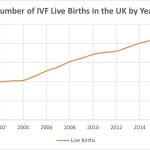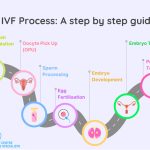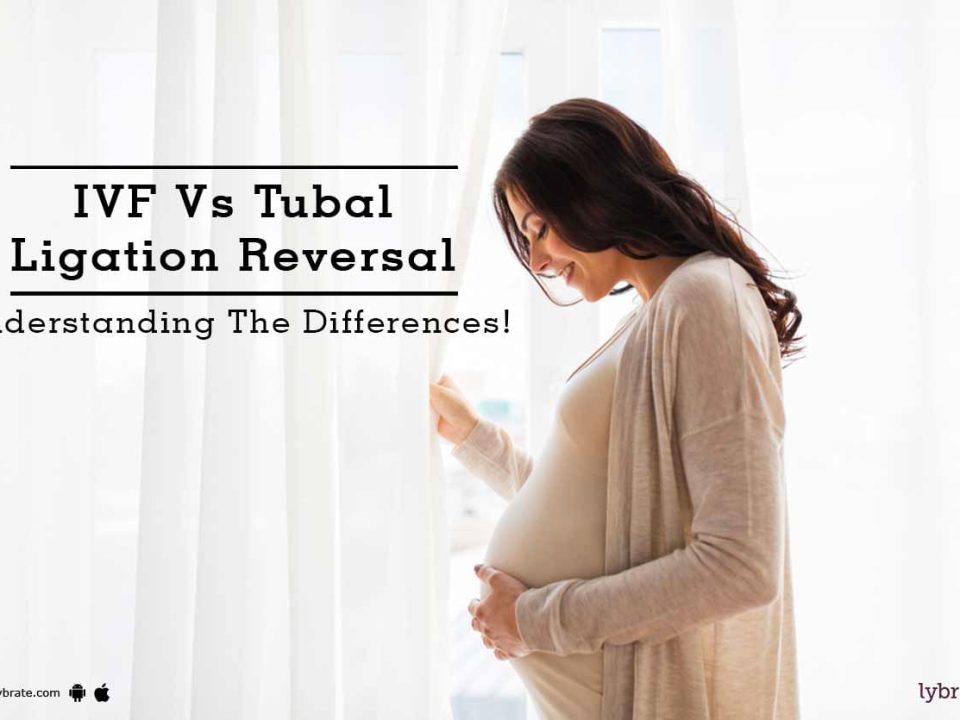How Much Does an IVF Procedure Cost? Your Guide to Understanding the Price Tag
Starting a family can feel like a dream come true, but for many, the path to parenthood isn’t always straightforward. If you’ve been exploring fertility treatments, you’ve likely heard of in vitro fertilization (IVF)—a process where eggs and sperm are combined in a lab to create embryos, offering hope to those facing infertility. But one question keeps popping up: How much does IVF really cost? It’s a big one, and the answer isn’t as simple as a single number. Costs vary widely depending on where you live, what your insurance covers, and the unique twists and turns of your fertility journey.
In this guide, we’re diving deep into the world of IVF costs. We’ll break down the numbers, uncover hidden expenses, and share practical tips to help you plan. Whether you’re just starting to research or you’re ready to take the plunge, this article will give you a clear picture of what to expect—plus a few surprises that other resources might not cover. Let’s get started.
What Is IVF, and Why Does It Cost So Much?
IVF is like a high-tech teamwork project. Doctors stimulate your ovaries to produce multiple eggs, retrieve those eggs, fertilize them with sperm in a lab, and then transfer the resulting embryo(s) into the uterus. It’s a remarkable process that’s helped millions of people become parents since the first IVF baby was born in 1978. But all that science comes with a price.
The cost isn’t just about the procedure itself—it’s a mix of medical expertise, advanced equipment, medications, and sometimes extra steps like genetic testing or donor eggs. Think of it like building a custom house: the basics might be standard, but add-ons and location can change the bill fast. In the U.S., a single IVF cycle typically ranges from $12,000 to $25,000, according to recent data from fertility clinics and government reports. That’s a wide range, so let’s unpack what’s driving those numbers.
Breaking Down the Base Cost of IVF
Every IVF journey starts with a core set of expenses. Here’s what you’re likely paying for in a standard cycle:
- Ovarian Stimulation and Monitoring: Medications to boost egg production can cost $3,000 to $5,000 per cycle. You’ll also have frequent ultrasounds and blood tests to track progress, adding another $1,000 to $2,000.
- Egg Retrieval: This minor surgery, done under sedation, runs about $3,000 to $5,000. It’s quick—usually 30 minutes—but requires a skilled team and sterile conditions.
- Lab Work and Fertilization: Combining eggs and sperm in the lab, plus growing embryos for a few days, costs around $2,000 to $4,000. This is where the magic happens!
- Embryo Transfer: Placing the embryo into the uterus is simpler, typically $1,500 to $3,000.
Add it all up, and you’re looking at a base price of $12,000 to $17,000 for one cycle at many clinics. But that’s just the starting point. Costs can climb depending on your situation, and not every cycle leads to a baby—about 30-40% of cycles succeed for women under 35, with rates dropping as age increases.
Real-Life Example: Sarah’s Story
Sarah, a 32-year-old teacher from Texas, shared her experience online. Her first IVF cycle cost $14,500, including meds and monitoring. “I thought that was it,” she said, “but then we needed a second round, and extras like freezing embryos pushed it way higher.” Her story is common—IVF often takes more than one try, and those add-ons can sneak up on you.
Hidden Costs You Might Not Expect
The base price is only part of the picture. Many families face extra expenses that aren’t always obvious upfront. Here are some curveballs to watch for:
- Pre-IVF Testing: Before you start, clinics often require tests like hormone checks or a semen analysis, costing $500 to $1,500.
- Medications Variability: Some people need higher doses or special drugs, pushing med costs to $7,000 or more per cycle.
- Embryo Freezing: If you have extra embryos, freezing them for later use adds $1,000 to $2,000 upfront, plus $300 to $600 annually for storage.
- Frozen Embryo Transfer (FET): Using frozen embryos in a future cycle costs $3,000 to $5,000 each time.
- Travel and Time Off: If your clinic isn’t local, factor in gas, flights, or hotel stays. Plus, missed workdays can hit your wallet indirectly.
These extras can easily tack on $5,000 to $10,000 over time. A 2023 study from Stanford found that couples often spend $50,000 total across multiple cycles—a number rarely mentioned in the “average cost” headlines.
Interactive Checklist: Are You Missing These Costs?
✔️ Have you budgeted for pre-IVF tests?
✔️ Are your meds covered, or are you paying out of pocket?
✔️ Do you plan to freeze embryos?
✔️ Will you need to travel or take time off work?
❌ Don’t forget: Unexpected delays or cancellations can add fees too!
Check off what applies to you—it’ll help you avoid surprises later.
How Location Changes the Price Tag
Where you live plays a huge role in IVF costs. In the U.S., prices vary by state and even city. For example:
- New York City: A cycle might hit $20,000 to $25,000 due to high demand and living costs.
- Rural Midwest: You could pay closer to $12,000 to $15,000 where overhead is lower.
- California: Expect $15,000 to $22,000, with extras like genetic testing more common.
Globally, it’s a different story. In the UK, a cycle averages $6,000 to $8,000, often with NHS subsidies. In India, it’s even less—$3,000 to $5,000—making “fertility tourism” a growing trend. A 2024 report from the International Fertility Federation noted that 10% of U.S. patients now consider traveling abroad to save money.
Quick Comparison Table: IVF Costs Around the World
| Location | Average Cost per Cycle | Notes |
|---|---|---|
| USA | $12,000 – $25,000 | Varies by state, no federal aid |
| UK | $6,000 – $8,000 | Partial NHS coverage possible |
| India | $3,000 – $5,000 | Popular for medical tourism |
| Australia | $8,000 – $12,000 | Some government rebates |
Thinking of traveling? Weigh the savings against travel costs and time away—it’s not always a clear win.
Insurance and IVF: What’s Covered?
Here’s the tough truth: most U.S. insurance plans don’t fully cover IVF. Only 20 states have laws mandating some fertility coverage, and even then, it’s often limited. For instance:
- New York: Requires coverage for up to three cycles, but only for certain employers.
- Texas: No mandate—coverage depends on your plan.
- California: Offers some diagnostic coverage, but IVF is usually out-of-pocket.
If you’re lucky, your employer might offer fertility benefits. Companies like Google and Starbucks now include IVF in their packages, covering $10,000 to $20,000 per employee. A 2025 survey by Carrot Fertility found that 68% of workers want these benefits, pushing more businesses to step up.
Tip: Ask These Questions
- Does your insurance cover diagnostics (e.g., blood tests)?
- Are medications included, or just procedures?
- Does your employer offer fertility perks?
Call your provider and get specifics—vague promises won’t pay the bills.
Add-Ons That Boost the Bill (and Maybe Your Chances)
IVF isn’t one-size-fits-all. Depending on your needs, you might opt for extras that raise costs but could improve success rates. Here’s what’s out there:
- Intracytoplasmic Sperm Injection (ICSI): For male infertility, a single sperm is injected into an egg. Adds $1,000 to $2,500 per cycle.
- Preimplantation Genetic Testing (PGT): Screens embryos for genetic issues, costing $3,000 to $6,000 for a batch of embryos.
- Donor Eggs or Sperm: Using donor eggs jumps to $20,000 to $45,000 per cycle; sperm is cheaper at $500 to $1,500.
- Surrogacy: If you need a gestational carrier, expect $50,000 to $150,000 total, including IVF and legal fees.
Do these work? A 2024 study from the American Society for Reproductive Medicine showed ICSI boosts fertilization rates by 15% in tough cases, while PGT cuts miscarriage risk by 10%. But they’re not magic bullets—success still depends on age and health.
Mini Quiz: Which Add-On Might You Need?
- Do you or your partner have low sperm count?
- Yes: ICSI could help.
- No: Skip it for now.
- Are you over 35 or have a family history of genetic disorders?
- Yes: PGT might be worth it.
- No: Save the cash unless advised.
- Are your eggs or sperm not viable?
- Yes: Donor options could be your path.
- No: Stick to standard IVF.
Your answers can guide a chat with your doctor—and your budget.
The Emotional and Financial Toll of Multiple Cycles
IVF isn’t a one-and-done deal for most. Only about 1 in 3 cycles leads to a live birth for women under 35, and odds drop with age. The average patient needs 2 to 3 cycles, pushing total costs to $30,000 to $60,000. A 2023 National Bureau of Economic Research study found that couples who don’t succeed after five years also face a 48% higher chance of mental health struggles—adding therapy costs to the mix.
Take Mike and Lisa, a couple from Ohio. Their first cycle failed at $15,000. The second, with ICSI, cost $18,000 and worked—but only after $33,000 total. “It’s a rollercoaster,” Mike said. “You’re betting big every time.”
Coping Strategy: Plan for the Long Haul
- Set aside a “cycle fund” for at least two attempts.
- Build a support network—friends, family, or online groups.
- Ask your clinic about multi-cycle discounts (more on that later).
New Trends in IVF Costs: What’s Changing in 2025?
IVF isn’t static—costs and options are shifting. Here’s what’s new based on recent buzz and data:
- Mini-IVF: Uses fewer drugs, cutting costs to $5,000 to $7,000 per cycle. Success rates are lower (20-25%), but it’s gentler and cheaper. Clinics in Colorado and Oregon are leading this trend.
- At-Home Monitoring: Some companies now offer kits to track hormones at home, saving $500 to $1,000 on clinic visits. A 2025 pilot study showed 85% accuracy compared to in-person tests.
- AI in Embryo Selection: Artificial intelligence is helping pick the best embryos, adding $500 to $1,000 per cycle but boosting success by 10%, per a University of London trial.
These innovations could save money—or at least stretch your dollar further. Keep an eye on clinics offering them.
Three Overlooked Factors That Affect IVF Costs
Most articles stick to the basics, but these lesser-known points can make or break your budget:
1. Clinic Success Rates vs. Cost
A cheap clinic might save you $2,000 upfront, but if their success rate is 20% lower, you’ll need more cycles. A 2024 analysis of 300 U.S. clinics found that top performers (50%+ success) charge 15% more but save money long-term by reducing failed attempts.
Action Step: Check success rates on the CDC’s ART database and compare them to pricing. A $20,000 cycle at a high-success clinic might beat $12,000 at a low-success one.
2. Lifestyle Prep Costs
Smoking, poor diet, or stress can lower IVF success. Quitting smoking (think $300 for patches) or seeing a nutritionist ($200-$500) isn’t free, but a 2023 study linked healthy habits to a 25% higher success rate. Small investments here pay off.
Action Step: Start prep 3-6 months early—exercise, eat well, and cut toxins.
3. Tax Breaks and Grants
The IRS lets you deduct medical expenses over 7.5% of your income, potentially saving $1,000 to $3,000 on taxes. Plus, grants like the Starfish Foundation offer $5,000 to $15,000 for eligible families—something only 1 in 5 applicants know about, per a 2025 survey.
Action Step: File deductions and apply for grants early—deadlines matter.
How to Save Money on IVF Without Cutting Corners
Paying for IVF feels daunting, but there are smart ways to ease the burden:
- Multi-Cycle Packages: Some clinics offer 2-3 cycle deals for $20,000 to $30,000—a 20% discount over single pricing.
- Financing Plans: Interest-free loans or payment plans spread costs over 12-24 months. Clinics like Shady Grove Fertility lead here.
- Medication Hacks: Ask about generic drugs or donated meds from patients who’ve finished treatment—savings can hit $1,000.
- Clinical Trials: Universities sometimes offer free or discounted IVF for research participants. Check ClinicalTrials.gov.
Sarah from earlier? She saved $2,000 on her second cycle by joining a trial. “It felt like a win after so much stress,” she said.
Step-by-Step: Budgeting for IVF
- Estimate Total Need: Plan for 2 cycles—say, $30,000.
- Check Coverage: Call insurance and HR for benefits.
- Save Up: Cut extras (coffee runs, subscriptions) for 6 months.
- Explore Aid: Apply for grants or loans.
- Talk to Clinics: Negotiate or ask about specials.
The Bigger Picture: Is IVF Worth It?
Cost isn’t just dollars—it’s emotional stakes too. A 2025 White House report pegged the “value of a child” at over $1 million in lifetime economic impact, dwarfing IVF’s price. For many, that’s the real math. But it’s personal. If you’re weighing it, ask:
- How much does parenthood mean to you?
- Can you handle the ups and downs?
- What’s your backup plan if it doesn’t work?
Poll: What’s Your IVF Priority?
- A) Lowest cost, even if it takes longer
- B) Highest success, whatever the price
- C) A balance of both
Share your pick in your head—it’s a good gut check.
Wrapping Up: Your IVF Cost Roadmap
IVF costs are a moving target—$12,000 to $25,000 per cycle, $50,000 or more overall, with wild cards like location, add-ons, and insurance. But it’s not just about the numbers. It’s about planning smart, knowing your options, and finding value in the journey. From mini-IVF to tax breaks, there’s more control than you might think.
You’re not alone in this. Millions have walked this path, and new tools are making it more doable every year. So, take a breath, crunch the numbers, and talk to your team—doctors, family, or even online forums. The price is steep, but for many, the payoff is priceless.
What’s your next step? Maybe it’s a call to a clinic or a chat with your partner. Whatever it is, you’ve got this.





